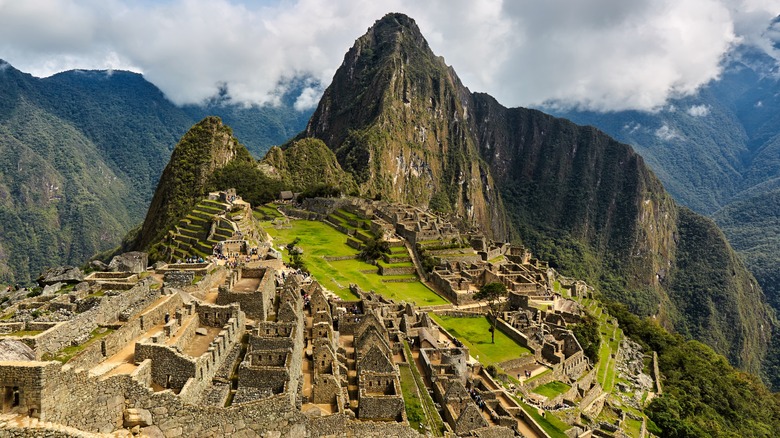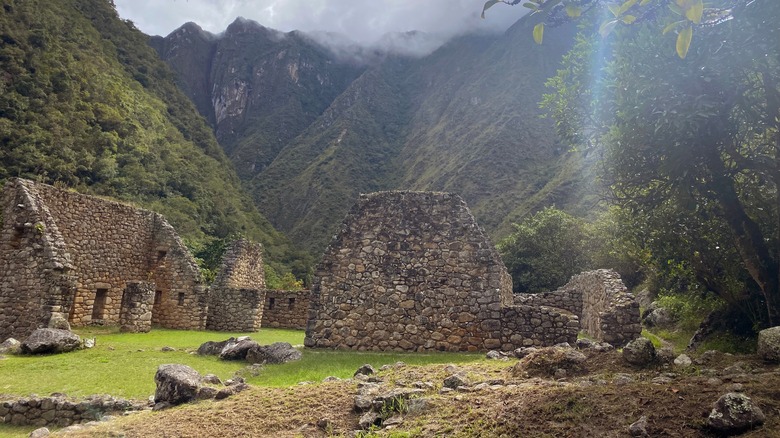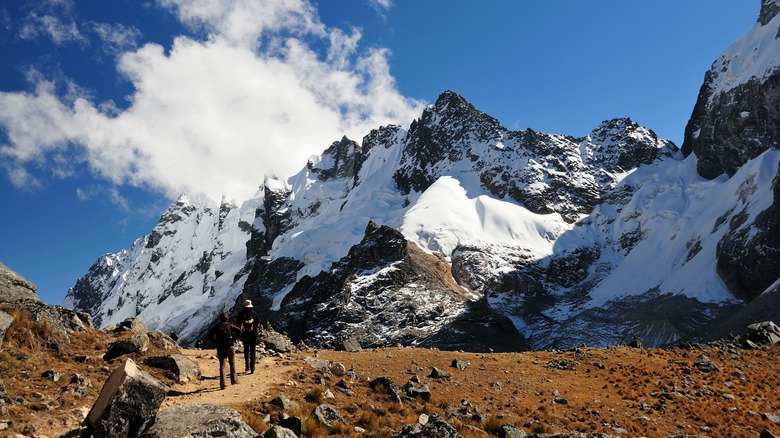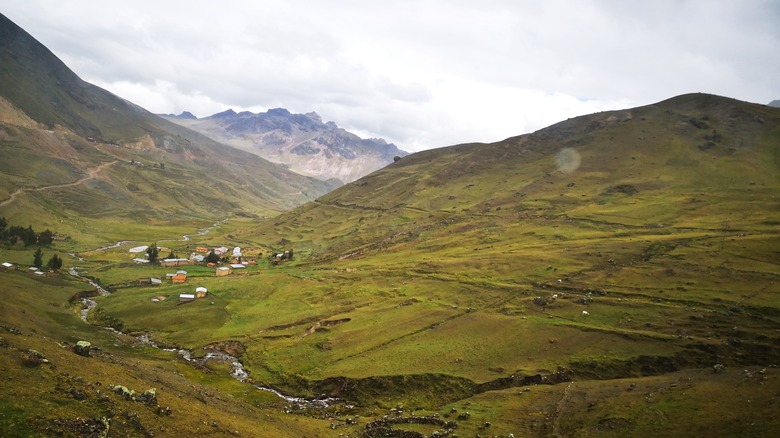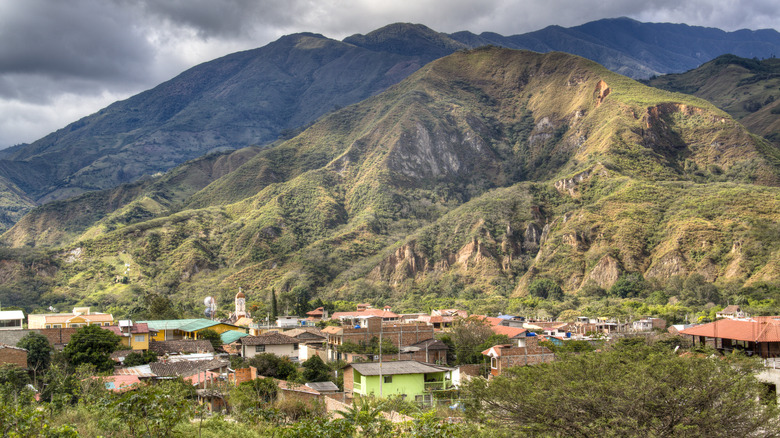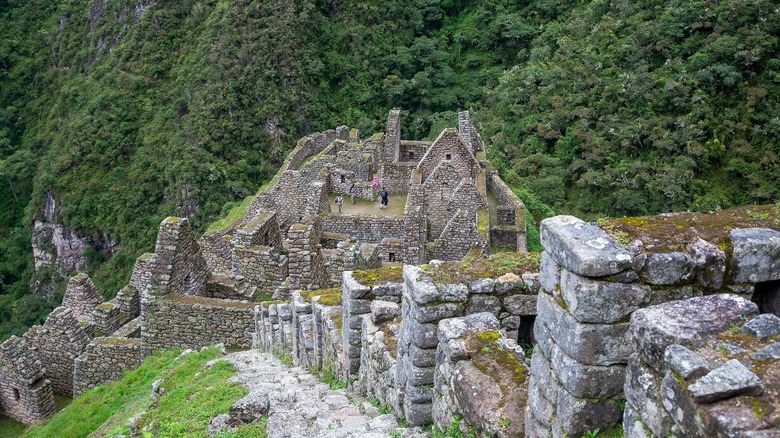Incredible Ways Travelers Can Experience Machu Picchu
Peru is a wilderness enthusiast's dream. From the arid deserts of the Nazca lines to the lush and diverse Amazon rainforest, this enormous country truly offers everything under the rainbow when it comes to outdoor adventure and exploration. Among its cultural and geographic attractions, Peru is also home to one of the famous New Seven Wonders of the World — Machu Picchu. A UNESCO World Heritage site, this 15th-century Incan citadel is located in the Eastern Cordillera of the Andes Mountains, high above the Urubamba River valley.
This mystical site draws over a million visitors each year (via Inca Trail Machu). While the ancient ruins themselves are awe-inspiring, and there are certainly merits to visiting the citadel alone for a day, outdoor thrill-seekers will revel in knowing there are several trekking routes that each offer a unique experience, breathtaking landscapes, diverse ecosystems, and cultural encounters. How do you know which one to pick? Here's a guide to help you decide.
The Standard Inca Trail
The Standard Inca Trail is the classic and most popular route to Machu Picchu. This four-day hike covers approximately 26 miles (43 kilometers) and passes through a variety of landscapes, including cloud forests and alpine tundra, retracing the paths once used by Incan runners on their pilgrimages.
The trail begins at what is known at KM 82, one of multiple markers along the route from Cusco city to Machu Picchu. This marker is near the town of Ollantaytambo. The trail passes iconic sites such as Dead Woman's Pass, which is the highest point of the trek at 13,828 feet, and the Sun Gate (Inti Punku), which offers a first glimpse of Machu Picchu from an aerial perspective. The Standard Inca Trail offers the opportunity to view numerous Incan ruins along the way as well, making it an ideal route for those interested in Incan history and culture.
A downside to the Standard Inca Trail is that hiking permits are required. The Peruvian government caps how many people can traverse trails each day to 500 (via Intrepid Travel). This includes guides and porters, so during the busy season from May to September when the weather is cool and dry, it can be difficult to secure a permit unless you book months in advance. On top of that, because of its popularity, tour operators can cost anywhere from $500 to $1500 per person, depending on the level of service, according to Machu Picchu Trek.
Salkantay Trek
For adventurers seeking a more challenging and less crowded route, the Salkantay Trek is an excellent alternative to the Inca Trail. It offers more solitude and a wider range of landscapes. Typically a five-day trek covering approximately 46 miles (74 kilometers), the Salkantay Trek starts near Mollepata, a small Andean town. It traverses the Salkantay Pass at 15,090 feet before descending into a lush cloud forest that provides some of the most ethereal views among the world's hikes. After dropping in elevation, travelers eventually reach Aguas Calientes, a city known as the gateway to Machu Picchu.
The trek features snow-capped mountains, such as Mount Salkantay, glacial lakes, and tropical jungles. The dramatic shift in ecosystems is a highlight of this route.
This trail tends to attract fewer crowds than the Standard Inca Trail, likely because it is longer and more physically demanding. On the plus side, no permits are required, making it more accessible in terms of booking tour guides and services — which come in handy when planning for tents, accommodations, and food along the hike. The Salkantay Trek can be a little cheaper than the Standard Inca as well since trekkers don't need to pay for a hiking permit.
Lares Trek
The Lares Trek is known for its cultural immersion and scenic beauty, making it an excellent choice for those interested in experiencing local Andean life. The trek usually lasts three to four days, covering about 20 miles (33 kilometers) but is less strenuous than the Standard Inca Trail. It starts in the town of Lares and passes through picturesque Andean villages, high-altitude lakes, terraced fields, and stunning vistas of snow-capped peaks. Trekkers also have the opportunity to participate in homestays, allowing them to interact with local communities and witness and participate in traditional farming methods.
After trekkers make their way toward the end of their hike near Ollantaytambo, travelers actually take a train to Aguas Calientes, from which point they can explore Machu Picchu.
Just like the Salkantay Trek, the Lares Trek sees fewer travelers and does not require permits, though it would be handy to book homestays and guides with a local tour service in order to learn the lay of the land and immerse oneself fully in the local culture.
The Vilcabamba Trek
An off-the-beaten-path adventure, the Vilcabamba Trek is a long five-to-seven day trek, covering 37 miles (60 kilometers) of terrain. It begins in the town of Huancacalle and takes travelers through remote areas of the Vilcabamba mountain range. Trekkers encounter high Andean passes, river valleys and lush forests. However, the highlights of this trail are the archaeological sites of Vitcos-Rosaspata and the Nustahispana. Vitcos-Rosaspata was a significant religious center of the Incan Empire, and it is still well-reserved to this day. Visitors can see temples, plazas, and the ceremonial platforms where the Incas performed sacrifices. The Nustahispana, also known as the White Rock, is a massive stone nearby, believed to have served as an astronomical observatory or ceremonial site.
The Vilcabamba Trek is the most remote of the ways travelers can get to Machu Picchu, and it sees the fewest number of trekkers out of all of the options. Because of its remote location and the complex nature of the route, tour guide services can be costly, sometimes exceeding a grand per person. However, unlike some other treks, hiking permits are not required, offering more flexibility for travelers who are prepared for the challenge.
Variants of the Inca Trail
For those with limited time or less trekking experience, there are shorter variants of the Inca Trail which offer a taste of the classic route without the extended commitment. This opens up the opportunity for people to engage in easy to moderate hikes up to Machu Picchu — which is important given that altitude sickness is a real threat in this part of Peru.
The first option is a day-long excursion to Machu Picchu. It is just under 8 miles (13 kilometers) long and starts at KM 104. It includes a visit to the ruins of Winay Wayna as well as Machu Picchu itself. It's a moderate hike that is suitable for many fitness levels. The other option is a two-day-long excursion which involves splitting up the visits to Winay Wayna and Machu Picchu over two days with an overnight stay in the town of Aguas Calientes in between.
Both variants offer stunning views, the chance to explore Incan ruins, and the opportunity to walk through diverse ecosystems. They also provide a glimpse of the famous Inca Trail. Still, because these treks go along the Standard Inca Trail, permits are required, and for the 1-day option in particular, they can be difficult to obtain due to high demand.
